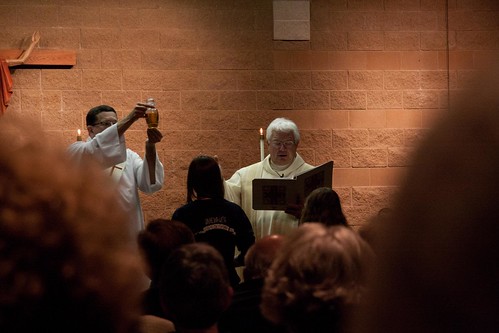 |
| Many colors, many meanings |
"Wait, is Holy Thursday a white day or a red day?"
"Father wore red on Palm Sunday -- why not purple?"
"What color should I wear on Good Friday?"If you've asked yourself one of these questions, or many related questions, in the past few days, you're not alone. During Holy Week, Catholics use three different colors liturgically: red, purple, and white. Below is a quick guide to these colors, which days they're associated with, and what they symbolize.
Red: Palm Sunday & Good Friday
 |
| On Palm Sunday, celebrants wear red |
Purple
Monday, Tuesday, and Wednesday of Holy Week all use the Lenten color of purple. These days are the regular Lenten days and so get the regular Lenten color, symbolizing the penance we are undergoing in preparation for Easter.
 |
| On Holy Thursday, celebrants wear white |
*Did you know Lent officially ends on Holy Thursday? On Holy Thursday, our mood turns celebratory as we poignantly celebrate the Last Supper the day before we commemorate Jesus' death on Good Friday, a day with no Mass. Holy Thursday is the day we dust the Gloria off and represent it to Catholic communities world wide, singing triumphantly the song of praise and glory to God that we have not sung together in weeks. And of course on Easter we joyously and triumphantly celebrate the Resurrection of Christ from the dead, singing "death, where is your sting?" Jesus reigns and we celebrate! So the liturgical color of white symbolizes joy, triumph, and glory.
*note: we don't end our fasting after Lent ends, but instead enter into the Triduum fast as we continue and intensify our preparation for Easter.
Image Credits: chelmsfordblue on flickr; bquad on flickr
No comments:
Post a Comment
What do you think?